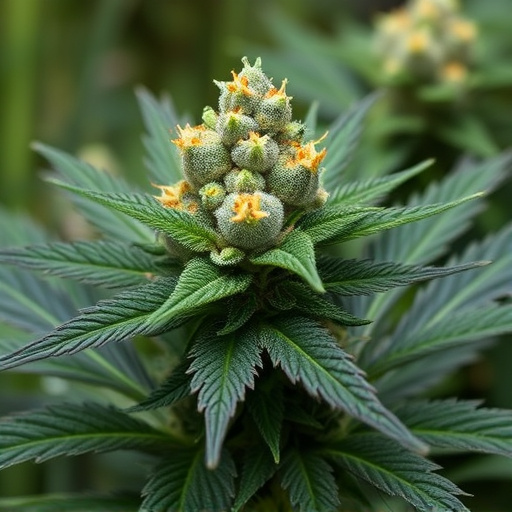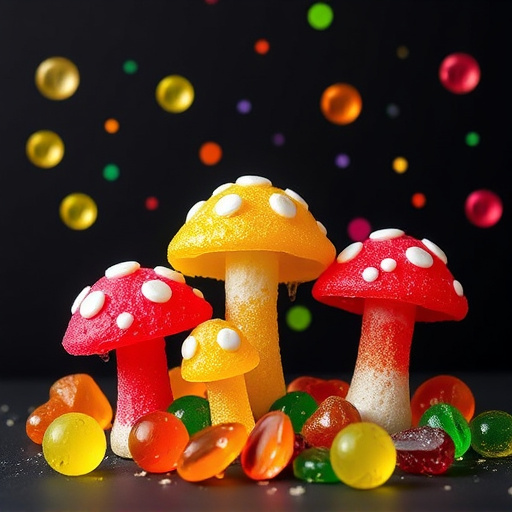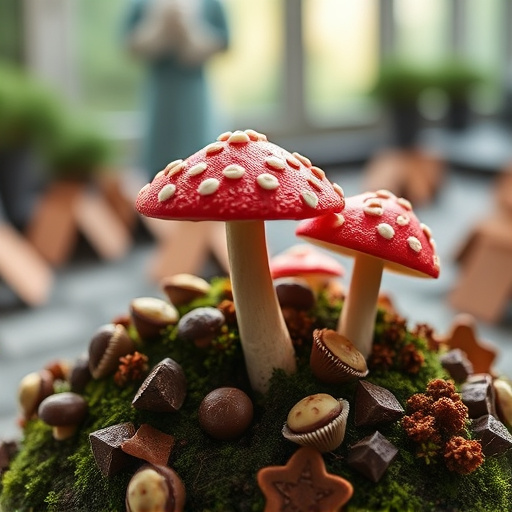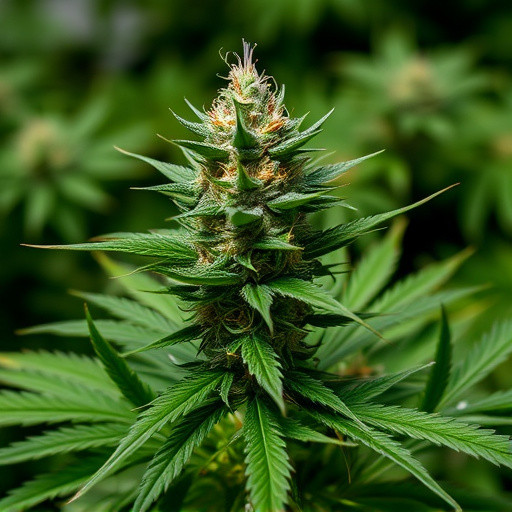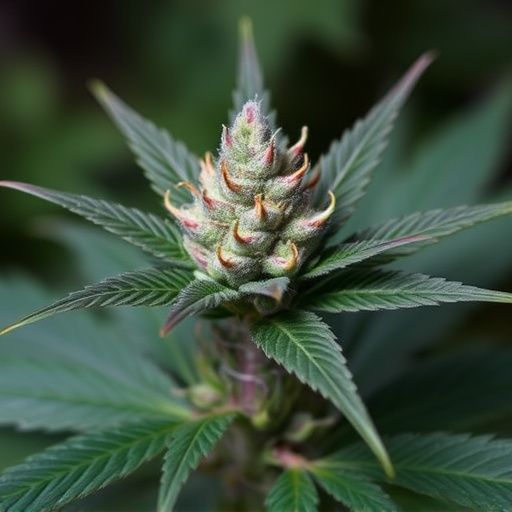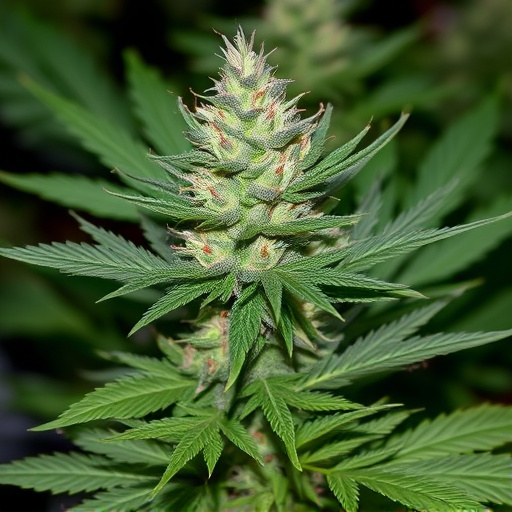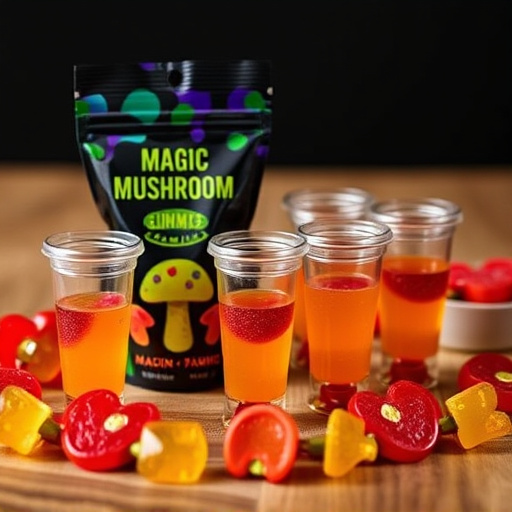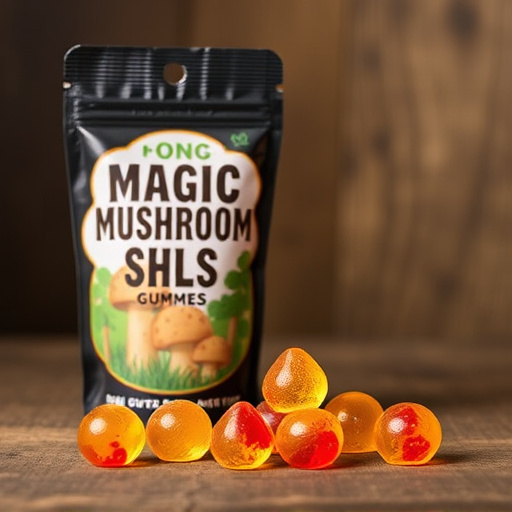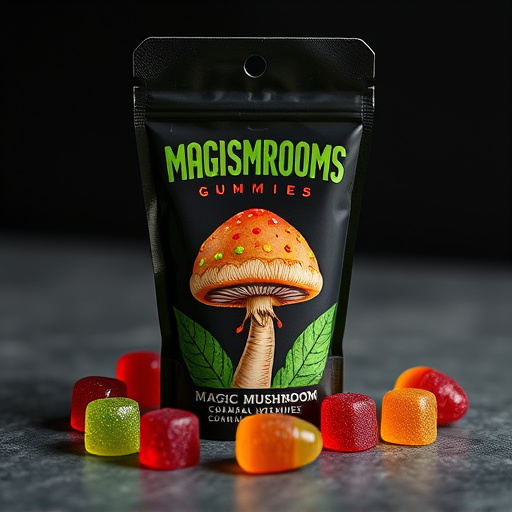Magic Mushroom Gummies offer a modern, discreet way to experience psychedelic effects through the active compounds psilocybin and psilocin, which interact with brain serotonin receptors. User experiences vary based on individual factors like dosage, tolerance, setting, and expectations, including potential for heightened creativity and intense emotions. While therapeutic debates continue regarding their use in controlled settings for depression and anxiety, understanding the placebo effect is crucial when exploring both benefits and risks of these innovative gummies.
- Understanding Magic Mushroom Gummies: Composition and Consumption
- – What are magic mushroom gummies?
- – Active compounds in magic mushrooms (psilocybin & psilocin)
Understanding Magic Mushroom Gummies: Composition and Consumption
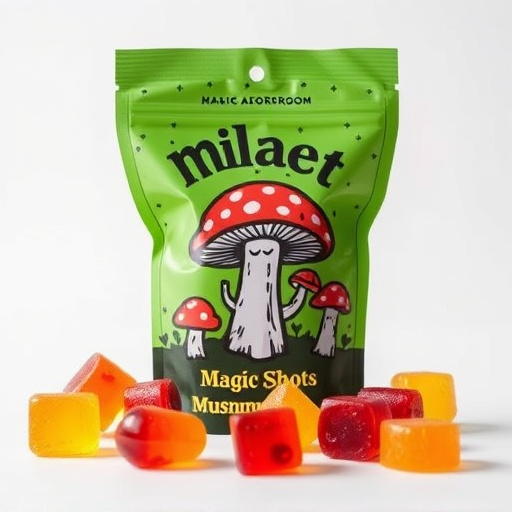
Magic Mushroom Gummies are a modern twist on traditional psychedelic experiences, offering a convenient and discreet way to consume psilocybin mushrooms, the active compound responsible for their mind-altering effects. These gummies often contain concentrated doses of psilocybin, blended with other natural ingredients like citric acid and sugar, designed to mimic the taste and feel of conventional candies. The consumption method is simple: users ingest a predetermined dose, allowing the psilocybin to interact with serotonin receptors in the brain, resulting in various subjective experiences.
Unlike placebos, which have no active substance but can still induce changes in mood or perception due to expectation, Magic Mushroom Gummies deliver a genuine psychedelic experience. The placebo effect, where individuals perceive improvements purely because they expect them, is less applicable here. Users are aware of the substance’s properties, allowing for intentional exploration of consciousness rather than merely attributing feelings to a ‘dummy pill’ or false belief. This awareness can enhance the overall impact and potential therapeutic value of the experience.
– What are magic mushroom gummies?
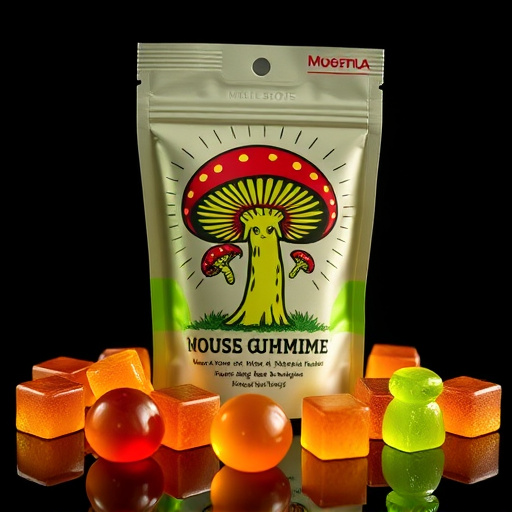
Magic Mushroom Gummies are an innovative way to experience the effects of psilocybin, the active compound found in certain types of mushrooms known for their psychoactive properties. These gummies are designed to mimic the experiences associated with traditional magic mushrooms, offering a convenient and discreet method of consumption. The term ‘gummies’ refers to their sweet, chewy texture, making them an appealing choice for those seeking an alternative to more conventional methods like drying and grinding mushroom powder or brewing teas.
Unlike many other substances, Magic Mushroom Gummies are subject to the placebo effect, where the perceived benefits can vary significantly from person to person based on expectations and beliefs. The placebo effect is a powerful phenomenon where individuals experience real changes in their physical or mental state simply because they believe something will work or has worked in the past. In the context of these gummies, the user’s mindset and expectations can influence their perception of the effects, making it an intriguing aspect to consider when exploring the potential benefits and risks of this alternative medication.
– Active compounds in magic mushrooms (psilocybin & psilocin)
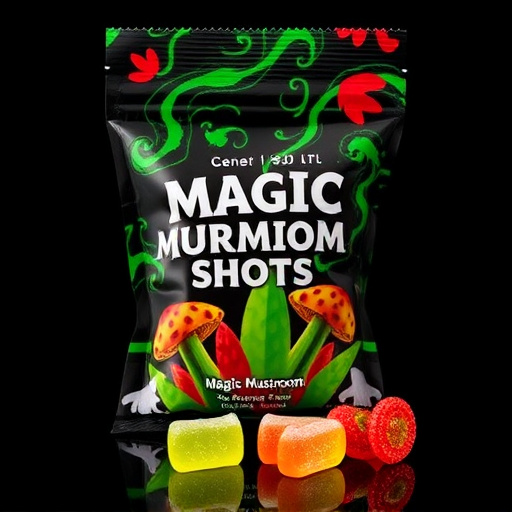
The powerful effects of magic mushroom gummies stem from their active compounds, psilocybin and psilocin. These natural substances are found in certain species of mushrooms and are known for their psychological impacts. Psilocybin is a prodrug, meaning it’s converted by the body into psilocin, which is responsible for the majority of the sensory and perceptual changes associated with “tripping.” Both compounds interact with serotonin receptors in the brain, leading to altered states of consciousness, enhanced creativity, and profound emotional experiences.
While magic mushroom gummies can produce intense effects, it’s crucial to understand that these are not always consistent across users. The experience is heavily influenced by factors like dosage, individual tolerance, setting (the environment in which the trip occurs), and expectations. This variability underscores the importance of approaching these substances with caution, especially as their recreational use continues to generate scientific interest and debate regarding potential therapeutic applications, including treating depression and anxiety, in controlled settings, where the placebo effect can be studied and minimized.
In conclusion, while magic mushroom gummies offer a novel way to experience the effects of psilocybin and psilocin, it’s crucial to remember that these substances are not without their complexities. Like any psychoactive compound, they can produce both profound positive changes and challenging experiences, known as “bad trips.” Furthermore, individual responses vary greatly, making it difficult to predict specific outcomes. Understanding the potential for both therapeutic benefits and adverse reactions is essential. As research continues, exploring the unique interaction between these mushrooms and our minds, we may uncover new insights into consciousness and mental health. However, always prioritize safety and seek professional guidance, especially when considering microdosing or therapeutic applications, to ensure a positive and beneficial experience, avoiding the placebo effect.
